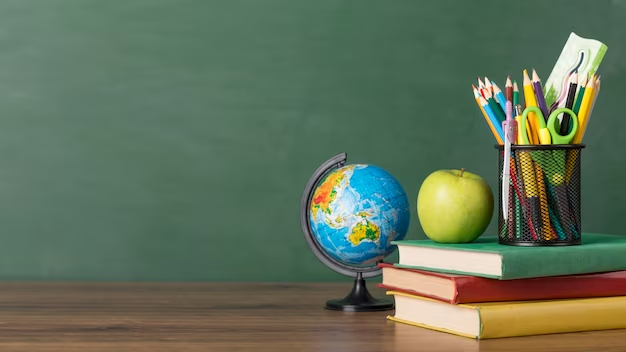Jaishankar to visit Pakistan for SCO meeting: What is the organisation — and what is its significance?
What in News?
SCO is one of the few international organisations which deal with security issues and primarily has Asian members.
What is the Shanghai Cooperation Organisation (SCO)?
Origins:
Formed in 1996 as the “Shanghai Five,” including China, Russia, Kazakhstan, Kyrgyzstan, and Tajikistan, in response to rising concerns over extremist groups and ethnic tensions in Central Asia after the dissolution of the USSR.
Expansion:
Officially established as an international organisation in 2001 with the inclusion of Uzbekistan. India and Pakistan joined as full members in 2017. There are 10 members, including China, India, Iran, Kazakhstan, Kyrgyzstan, Pakistan, Russia, Tajikistan, Uzbekistan, and Belarus. On July 4, 2024, the SCO officially admitted Belarus as an official member during the 24th Meeting of the Council of Heads of State of the SCO in Astana, Kazakhstan.
Observers: Afghanistan and Mongolia.
Why is SCO significant?
Security Focus:
Security issues, counter-terrorism efforts, and cooperation on regional stability.
Alternative to Western Influence:
With major powers like Russia and China leading the group, the SCO is seen as an alternative to Western-led international forums.
India’s Interest:
It enhances India’s engagement with Central Asian nations and offers a platform for security cooperation despite tensions with China and Pakistan.
Historical Context for India’s Membership
Balance of Power:
Russia supported India’s 2017 inclusion in SCO, while China backed Pakistan, balancing influence within the organization.
India’s Role in SCO
Security Cooperation:
India actively participates in the Regional Anti-Terrorist Structure (RATS), a critical SCO organ for counter-terrorism exercises and intelligence sharing.
Challenges:
India’s strained ties with Pakistan and China complicate its participation. Although the SCO promotes cooperation, it does not resolve underlying tensions among its members.
Conclusion
SCO is vital for regional security, providing India a platform for communication with Central Asian countries, but struggles to resolve deep rivalries.
As China tightens grip, India and US sign agreement to strengthen supply chain for critical minerals
What in News?
This follows a series of unexpected curbs imposed by China, including restrictions on exports of gallium and germanium, which are products widely used in the semiconductor industry.
Critical Minerals:
Critical minerals are essential for economic development and national security. Their availability is crucial, as supply chain vulnerabilities may arise from a lack of access or geographical concentration of these minerals.
Supply Chain Vulnerabilities:
Concentration of critical minerals can lead to disruptions, affecting industries and technologies reliant on them.
Critical Minerals for India
Identified Minerals: A set of 30 minerals has been identified by the Expert Committee under the Ministry of Mines based on factors like disruption potential and import reliance.
Key Minerals: Antimony, Beryllium, Cobalt, Lithium, Nickel, and others.
Geographical Distribution: Critical minerals are found in states like Bihar, Gujarat, and Jharkhand.
Current Global Scenario
Rising Demand: Demand for critical minerals surged, especially lithium, cobalt, and nickel, driven by clean energy technologies.
Market Growth: The IEA predicts significant growth in demand for minerals essential for clean energy by 2040.
Concentration of Resources: Major reserves are concentrated in countries like Australia, China, and the DRC, raising geopolitical concerns.
Significance of Critical Minerals
Economic Development: Essential for high-tech industries, green technologies, and job creation.
National Security: Vital for defense and aerospace, ensuring self-reliance in critical supplies.
Environmental Sustainability: Necessary for achieving India’s net-zero targets by 2070 and transitioning to electric vehicles.
Concerns Related to Critical Minerals in India
Limited Domestic Reserves: India has limited domestic reserves of key critical minerals.
Increasing Demand: Rising demand for these minerals challenges India’s supply capabilities.
Challenges Posed by China: China’s dominance in critical minerals poses a strategic challenge to India.
Steps Required to Boost Critical Minerals Availability
Ensuring Resource Availability: Strengthening domestic exploration and securing international partnerships.
Financial Considerations: Significant investment is required to scale mining and processing capabilities.
Technology as the Key Driver: Advancements in technology are crucial for efficient extraction and processing of critical minerals.
Conclusion
Addressing the challenges related to critical minerals is vital for India’s economic growth, national security, and environmental sustainability.
How circular migration can help meet global skill shortage and lift Indians out of poverty
What in News?
India can address skill shortages in Europe and Japan through circular migration, allowing workers to gain experience and contribute to the home economy.
Global Skill Shortages
Regions Affected: Europe and Japan are experiencing shortages in critical sectors such as healthcare, construction, and technology due to ageing populations.
Government Initiatives
Skill Development: The National Skill Development Corporation (NSDC) and state governments focus on identifying skilled workers and facilitating transitions through training and certification.
Training Programs: Initiatives like Recognition of Prior Learning (RPL) upgrade skills to meet international standards.
Migration:
A migrant is an individual who is relocating or has relocated across an international boundary or within a state, departing from their usual place of residence. Analysing changes in migration regarding scale, direction, demographics, and frequency can inform the development of impactful policies, programs, and practical interventions.
Types of Migration
Internal Migration: Movement within the country, e.g., rural-urban migration.
External Migration: Cross-border movement for work or asylum.
Forced Migration: Due to wars or disasters.
Voluntary Migration: Driven by better economic prospects.
Reverse Migration: Return to the original place of residence.
Reasons for Migration
Economic: Push factors (poverty), pull factors (better jobs).
Socio-Cultural: Marriage, caste-based issues.
Political: Instability or persecution.
Environmental: Climate change, natural disasters.
Impacts of Migration
Positive:
Economic Growth: Remittances boost the economy.
Social Change: Spread of new ideas, cultural diversity.
Innovation: Migrants bring skills, contributing to development.
Negative:
Urbanization Pressure: Overcrowding, pollution, slums.
Social Tensions: Competition for resources, family separation.
Poverty
Condition in which a person or community lacks the financial resources and essentials for a minimum standard of living & income level from employment is so low that basic human needs can’t be met.
Types of Poverty
Absolute Poverty: Scarcity of basic needs (food, water, shelter), measured at $1.90/day. Common in developing nations.
Relative Poverty: Based on income inequality compared to surrounding living standards. Common in developed countries.
Situational Poverty: Temporary, caused by adverse events (job loss, disaster). Recoverable with minimal help.
Generational Poverty: Passed through generations, trapping people in poverty with no access to escape tools.
Rural Poverty: Fewer job opportunities, services, and education in rural areas. Dependence on farming and menial work.
Urban Poverty: Overcrowding, limited health, education, housing, and social protection in cities.
Conclusion
Circular migration offers a strategic approach to bridge global skill shortages while uplifting Indian workers from poverty.
Environment: How elephants are counted, why policy needs a rethink
What in News?
India’s elephant populations have significantly declined, highlighting the need for improved counting methods and urgent policy reassessment for protection.
Declining Elephant Populations
According to the report titled “Status of Elephant in India 2022-23,” there have been delays in the Northeast census. Development projects, including mining and infrastructure, are identified as significant threats to elephant habitats.
New Methodologies
Lower numbers may not be directly comparable to previous censuses.
The DNA profiling method did not significantly impact the northern landscapes, indicating that the drastic decline in other regions cannot solely be attributed to methodological variations.
Current Affair – 4 September 2024
Current Approaches
The Synchronous All India Elephant Estimation 2022-23 (SAIEE 2023) used a genetic mark-recapture model to identify individual elephants through dung samples, marking a significant methodological shift.
Project Elephant Overview
Launched: 1992 by the Government of India as a Centrally Sponsored Scheme.
Implementation: Operates in 16 states/UTs with financial and technical support from the Ministry of Environment, Forests, and Climate Change.
Status of Elephants in India
Population: India has over 60% of wild Asian elephants, with 29,964 recorded in the 2017 census.
Reserves: 31 elephant reserves, covering approximately 76,508 sq km across 14 states.
Highest Populations: Karnataka (6,049), Assam (5,719), Kerala (3,054).
About Asian Elephants
Subspecies: Indian, Sumatran, and Sri Lankan.
Habitat: Found in grasslands and forests across 13 countries in South and Southeast Asia.
Reproduction: Longest gestation (up to 680 days) and birthing every 4-6 years.
IUCN Red List: Endangered
Legal Protection: Listed under Schedule I of the Wildlife (Protection) Act, 1972 and CITES Appendix I.
Goals of Project Elephant
Protect elephants and habitats.
Mitigate human-elephant conflicts.
Promote conservation-friendly policies.
Monitor elephant populations and threats.
Enhance research for effective strategies.
Conclusion
Declining elephant populations highlight the urgent need for policy reform.
Question:
What specific policy interventions can be implemented to address the habitat threats facing elephant populations in India?
Kerala Urgently Needs to Identify Risk Zones
What in News?
Kerala is facing more natural disasters like floods and landslides, driven by climate change, unsustainable development, and landscape changes.
Natural Status of Kerala
With the sea to its west and the Western Ghats to its east, Kerala used to be considered a relatively disaster-free zone. Kerala’s widespread settlements, from coasts to hill slopes, coupled with infrastructure development, disregard natural drainage, slope stability, and encroachments into forests.
Recent Disasters in Kerala
In July 2024, landslides in Wayanad severely affected Mundakkai and Chooralmala.
Why Disasters Are Increasing in Kerala
- Landslides in the Western Ghats are becoming regular during monsoon seasons.
- The Chaliyar river, like the Sharavati, originates on the eastern side of the Western Ghats and cuts across the mountain range to debouch into the Arabian Sea.
- Rapid warming of the Arabian Sea increases the risk of extreme weather events, including floods, heatwaves, and cyclones, with rising Indian Ocean heat content since 2000.
Increasing Disaster Frequency
- Floods: The Kerala floods of 2018 were termed the “floods of the century.”
- Coastal Erosion: Over 250 km of Kerala’s 590 km coastline is impacted by erosion.
- Landslides: Frequent occurrences in the Western Ghats, worsened by human encroachments, development projects, and disregard for natural land stability.
About Landslides
Landslides are the movement of a mass of rock, debris, or earth down a slope due to gravity.
Causes of Landslides
- Geography: Kerala’s steep slopes, tectonic factors, and heavy rainfall.
- Human Activities: Deforestation, unplanned settlements, infrastructure development, and land-use changes.
Types of Landslides
- Rock Falls: Free-falling rocks from steep cliffs.
- Debris Flows: Saturated loose debris and soil that flow downslope.
- Earth Flows: Slow-moving masses of soil or fine particles.
- Slumps: Rotational sliding of a mass of earth or rock.
Way Forward
To mitigate landslides and other disasters, Kerala needs to implement sustainable land use, reforestation, improved drainage systems, slope reinforcement, early warning systems, public awareness programs, and policy reforms.
Array




